🌱Algae = regenerative???
PLUS How to use AI to milk microalgae, Ireland puts up €20m, and industry jobs
"Prepare for more failure than success. But work around this by being agile and persistent." — David Ramjohn, CEO AlgEternal
Dear algae technologists - hello and welcome to the Paxtier Report!
This week, an artist zoomed in on some microalgae and the results were pretty insane:
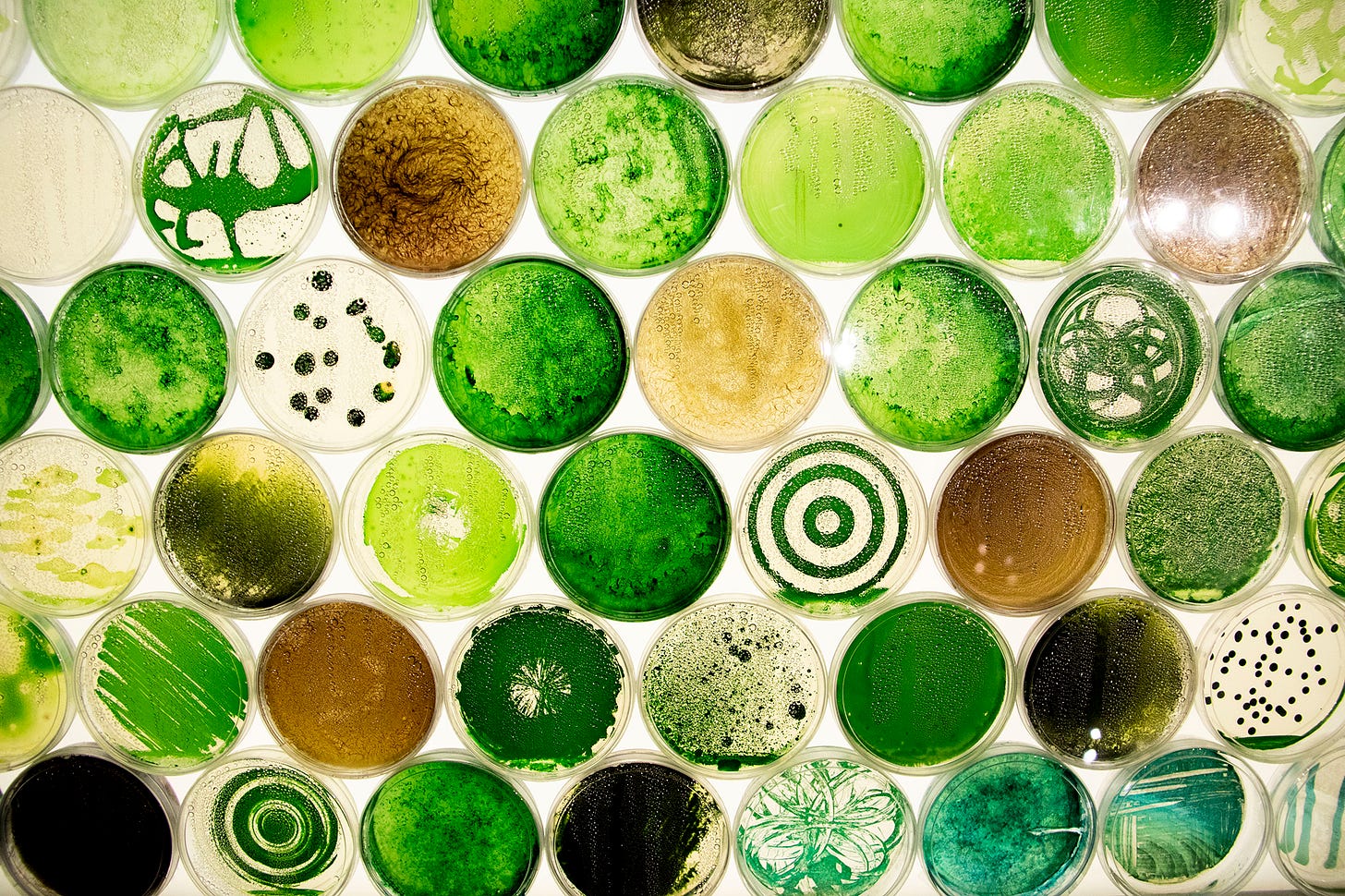
See more HERE.
Meanwhile, this little isopod made headlines thanks to its role in fertilising the red alga Gracilaria gracilis:
In today’s report:
Markets: ☘️Ireland puts up €20m to fund ‘sustainable’ aquaculture projects
Deals: 🤝Sea6 Energy is raising $4.2m
Research Rundown: 🧪How to use AI to milk microalgae
Movers and Shakers:🌱Building a regenerative future with microalgae
Around the web: 🗽New York’s Nea Studio launches chandeliers made with algae
Markets and Investing
✂️Algae Market Snippets
Some big moves this week included:
Ireland puts up €20m to fund ‘sustainable’ aquaculture projects, with the focus on seaweed, RAS and IMTA projects. (Read more HERE)
Here’s a look at Equinor’s role in a $3-million pilot to grow carbon-capturing seaweed off the coast of Norway (Read more HERE).
Just Eat and UEFA announced that, in collaboration with sustainable packaging pioneer Notpla, biodegradable seaweed-coated food packaging will be introduced at the UEFA Women’s EURO Final at Wembley Stadium on 31st July, marking a first for a major football match.(Read more HERE).
Singapore-based Global Centre for Maritime Decarbonisation (GCMD) is leading a consortium of 18 industry partners in an $18M drop-in biofuels pilot project aimed at establishing an assurance framework for ensuring the supply chain integrity of current and future green marine fuels. (Read more HERE).
New Danish pet food startup Globe Buddy debuted its first sustainable dog treat line, Globe Buddy Crunch. (Read more HERE).
Celebrity chefs, NGOs and business leaders launch new Coalition for Sustainable Aquaculture. The newly-launched Coalition for Sustainable Aquaculture (CSA) is dedicated to charting a responsible path forward for ocean farming in US offshore waters. (Read more HERE).
NewFish unveils their latest prototype - and this prototype incorporates five different species of micro & macro algae including Sophie's BioNutrients, Bull Kelp powder from Akaroa and Wakame from the Coromandel (Read more HERE)
Scotland's National Aquaculture Technology and Innovation Hub has received a £1m grant from the Wolfson Foundation to support its research in sustainable aquaculture. (Read more HERE).
Sea6 Energy, based in Bengaluru, is raising $4.2 Mn and has added an extra investor, BASF Venture Capital GmbH. Sea6 Energy, founded in 2010, develops technologies to convert biomass into biofuel, plant growth stimulants, plant defence products, animal feed ingredients, and other bio-renewable products. (Read more HERE)
Gavan Technologies, Ltd., has developed a novel, waste-free protein extraction method. The company assures that the same process can be applied to any plant protein source, from soybeans, chickpeas, lentils, algae, and others. (Read more HERE).
In depth with Peter Green
🌱Building a regenerative future with microalgae
As climate change continues to disrupt every aspect of our lives, humans must actively fight back against further ecosystem degradation.
To do this, the climate movement is pushing for regeneration – and producing renewable, high-value products from algae could be a key pillar in that transition.
One company paving the way in this domain is biotech firm AlgEternal Technologies, LLC (AET). Since its inception, AET has been focused on the sustainable application of microalgae as an alternative to fossil hydrocarbons.
Thanks to their patented photobioreactor technology, they have become a vertically-integrated producer of high value microalgae-derived products like ElixEarth®, a natural soil amendment containing a live polyculture of microalgae, and the AlgAllure® AlgaRiche® Skin Care Collection, containing AlgEternal’s proprietary red algal ingredient, PhycoDerm®
This week, I had the pleasure of speaking to AET’s CEO - David Ramjohn, and in this teaser from our chat, David and I discuss the evolution of his algal journey, why microalgae can help us build a regenerative future and advice for fellow algae tech entrepreneurs.
What inspired you to work with microalgae?
To put it simply - these microorganisms laid the foundations for our planet’s ability to support our life forms, and if they didn't start photosynthesising 2.7 billion years ago, we wouldn’t have what we have today.
All those years ago, a series of mutations took place which allowed these organisms to convert sunlight, carbon dioxide and water into glucose and oxygen. And because of this, our planet completely changed.
Earth’s oceans became saturated with free oxygen, this oxygen then escaped to the atmosphere, microorganisms started to produce antioxidants, higher-level plants and other organisms began to evolve, and anaerobes migrated to areas low in O2 - including inside of humans.
This new availability of glucose, driven by photosynthetic microalgae, was the first “Green Revolution.” It fostered evolution as we know it, and microalgae remain one of the most efficient organisms that perform this process.
These points (alongside many others) highlight the importance of algae and underscore why these organisms can play such a pivotal role in the regeneration of Earth.
How has your journey with microalgae evolved to where it is now?
I was introduced to algae during my undergraduate studies. For a whole semester, my professor spoke at length about these organisms’ potential, and that really resonated with me.
It was only later, after spending a number of years in the professional world, that I returned to the field. And in 2017, I became AlgEternal’s CEO.
Since that moment, I've focused my attention on the single greatest rate-determining step in the industry - producing microalgae at scale.
And at AlgEternal, we’ve solved this by building a patented Vertical Growth Module to produce microalgae, faster, cheaper, cleaner, and with fewer culture crashes than any other growth platform.
What advice would you give to others in this domain?
Firstly, be sure to assess your capital needs early on, and secure sufficient financing. Getting things off the ground, proving your tech, hiring people and marketing your products requires plenty of capital - and raising money for algae tech nowadays can be really hard; we’re experiencing this right now. This dates back to the great algae biofuel bubble, when undelivered promises lost investors hundreds of millions of dollars and made them wary about algae investments.
Secondly, if you come from a more scientific background - get clued up on business. Can you answer questions around monetisation, exit strategies, ROI, marketing, and distribution? Take time to learn these aspects if you want to stand out from the crowd.
And finally, I’d encourage you to prepare for more failure than success. But work around this by being agile and persistent.
Which books do you gift most to others?
At AlgEternal, we are trying to build a regenerative platform using microalgae because we recognise that sustainability is not enough. That’s one of the topics covered in Daniel Christian Wahl’s book "Designing Regenerative Cultures". Also of great help to anyone interested in moving beyond sustainability would be John Fullerton’s “Regenerative Capitalism: How Universal Patterns and Principles Will Shape the New Economy,” and John Elkington’s “Green Swans: The Coming Boom in Regenerative Capitalism.”
Finally, two other important books are “Doughnut Economics” by Kate Raworth and “Consilience” by E. O. Wilson, which emphasises how to build holistic solutions by unifying the sciences and humanities.
If you’d like to learn more about AlgEternal, be sure to check out the site, and you can follow David on LinkedIn and Twitter.
📝Research Rundown: How to milk microalgae with AI
THE BIG IDEA
This week, Overmans et al. showcased how machine learning, photobioreactors and a membrane separation process could be used to continuously extract patchoulol - a compound widely use in perfumery - from engineered green algal cells.
The breakdown
To do this, they built a hollow microfibre membrane system which effectively separated the patchoulol product, before further concentrating the compound using specialised membranes which were selected and designed by AI.
For those of you wondering - the whole process looked something like this:
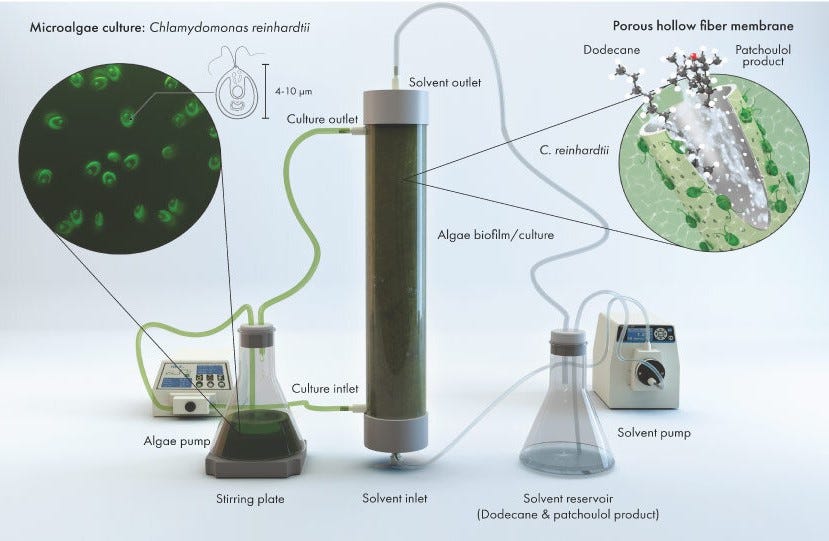
Ultimately
Their extraction and product purification process offered “six- and two-orders of magnitude lower solvent consumption compared to synthetic production and thermal-based separation, respectively.”
And here’s what author Sebastian Overmans had to say:
The advantage of our method is that products can be continuously extracted from liquid microbial cultures, such as microalgae, in a process known as 'milking,' rather than being extracted laboriously from the biomass at the end of a batch culture.
Be sure to check out…
… The extraction process and membrane combinations that the team implemented. The set up was quite ingenious and their use of machine learning to guide the refinement of the membrane opens the door for extracting valuable products from all sorts of microorganisms - not just algae.
🔥 What else was hot in algae tech this week?
(Paper) Modulation of rumen bacterial community and feed utilization in camel and sheep using combined supplementation of live yeast and microalgae (Nature)
CMFRI identifies 342 sites for large-scale seaweed farming in India. The ICAR-Central Marine Fisheries Research Institute (CMFRI) has done geo-referencing of 342 farming sites in the country over 24,167 hectares of seaweed cultivation. These sites have the potential to produce 9.7 million tonnes (wet weight) of seaweed per year. (Read more HERE).
Irish aquatech startups make a splash at Innovation Studio Community Day - This year’s Innovation Studio sought Irish companies who were developing projects that would increase aquaculture’s sustainability and tech credentials – whether at home or further afield. The seven startups in the 2022 cohort were selected after a competitive application process and included companies that specialised in shrimp health, seaweed cultivation and shellfish farming. (Read more HERE)
AlgaeCal introduces plant-based calcium supplements made from algae (Read more HERE).
New Law Pursues SDGs Through Sustainable Aviation Fuel from Waste Oil and Algae. (See more HERE)
(Paper) Using metabarcoding and droplet digital PCR to investigate drivers of historical shifts in cyanobacteria from six contrasting lakes (Nature)
The seaweed startup world needs to slow down. Packaging made from seaweed can help solve our plastics problem, but not if we rush it. (Read more HERE).
Why Pearlita Foods Set Out to Make the First Cultivated Oyster Meat: (Read more HERE).
Seaweed helps Maine lobstermen ride the storm of climate change. (Read more HERE).
President Joseph Biden on Monday approved the Bryan administration's request for a federal state of emergency declaration to address the sargassum problem badly affecting St. Croix, with the constant flow of seaweed impacting water production at the V.I. Water and Power Authority plant in Richmond. (Read more HERE).
New York’s Nea Studio Launches Chandeliers Made With Algae. (Read more HERE)
🐦Tweet of the week
Jobs
Algae Strain Engineer - PhycoWorks
Research Scientist - Living Carbon
That’s all folks!
Thanks again for joining us this week. Hope you have a great day and stay tuned for more algae tech updates soon!
Peter





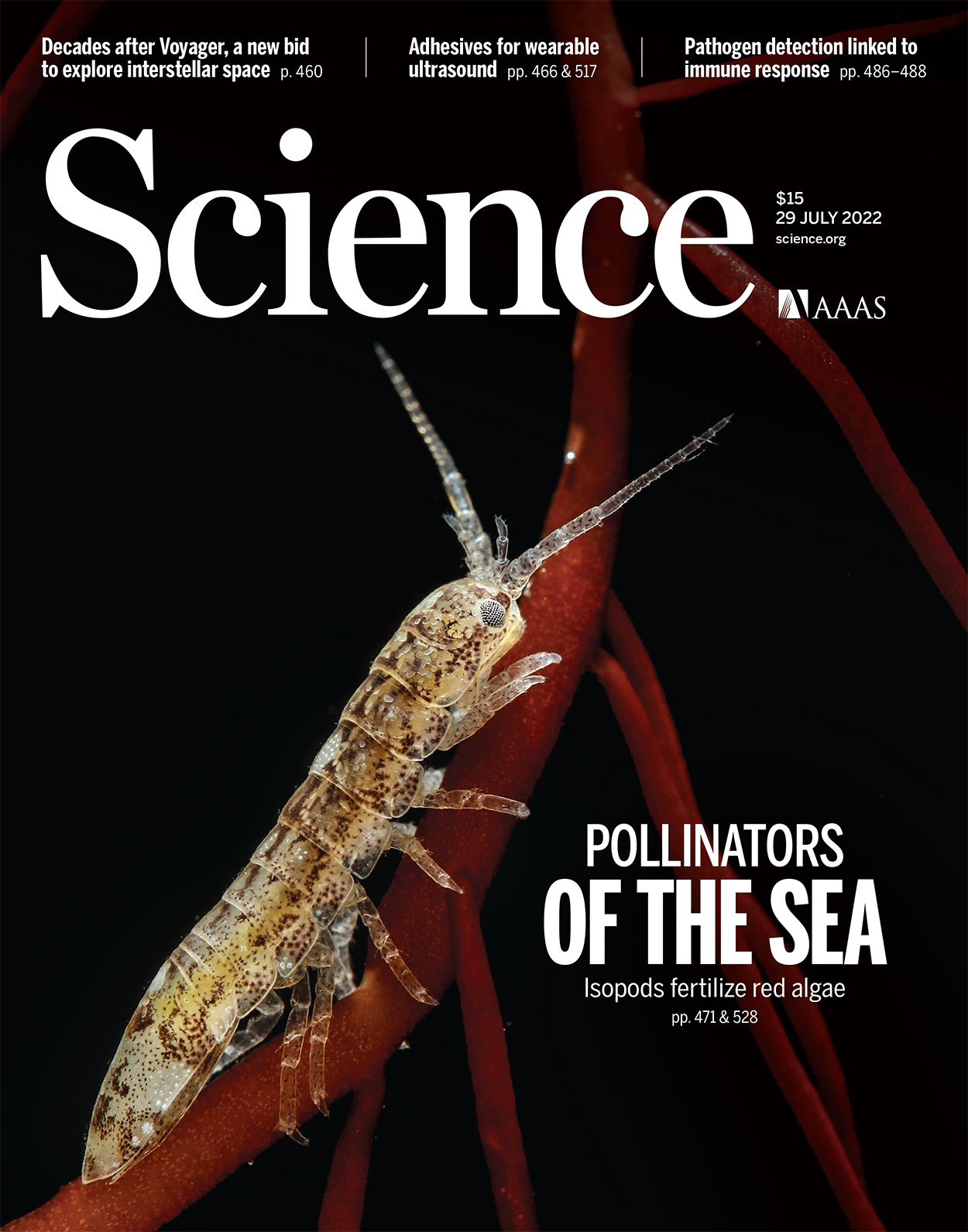
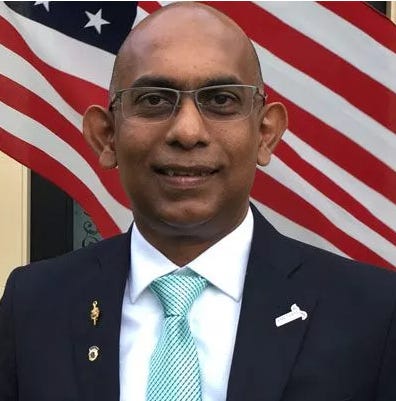
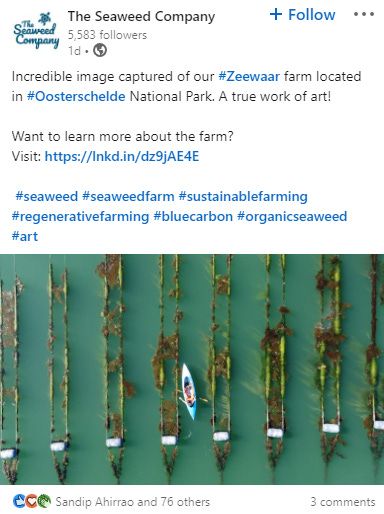
What happened to David Ramjohn?
His work is revolutionary. Was he silenced?